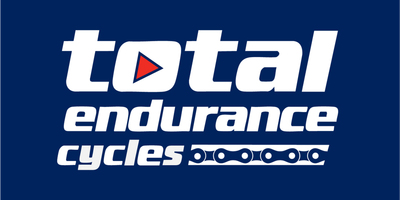Cleat Fitting
Ensure your Cleats are in the correct position with our Cleat fitting service
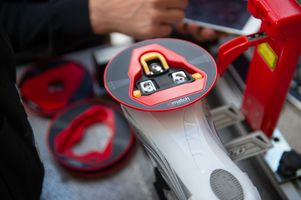
Common Cleat position issues
Knee Pain: Misaligned cleats can cause improper tracking of the knee joint, leading to pain and discomfort.
Foot Numbness and Tingling: Incorrect cleat positioning can put excessive pressure on certain areas of the foot, leading to numbness or a tingling sensation.
Lower Back Pain: Poor cleat alignment can alter your cycling posture, putting strain on your lower back muscles.
Hip Pain: Misalignment can lead to improper hip movement, causing pain and discomfort in the hip region.
Achilles Tendonitis: Cleats that are positioned too far forward or backward can strain the Achilles tendon.
Reduced Power Transfer: Incorrectly positioned cleats can affect the angle and efficiency of your pedalling motion.
Chafing and Blisters: Poor cleat positioning can cause excessive movement of the foot within the shoe, leading to chafing and blisters.
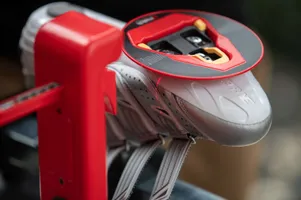
The Importance of Cleat Positioning
Key Contact Points: The feet are a crucial contact point between the body and the bike, transferring power through the cleat system. Proper cleat positioning is vital for stability, comfort, and performance.
Positioning Variables: Modern cleat systems allow adjustments in fore/aft, rotational, and lateral positions. Misaligned cleats can cause instability, overuse of the calf muscles, and discomfort.
Anatomy & Mechanics: The traditional “ball of foot over pedal spindle” position is outdated. Cycling mechanics differ from running, as the rigid shoe sole eliminates the need for toe extension. Cleats should be positioned to balance stability, comfort, and performance.
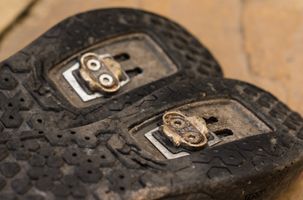
Factors Influencing Cleat Placement
Forward vs. Rearward Placement:
A forward cleat position engages the calf more, benefiting sprints but causing fatigue and instability over long rides.
A rearward position minimizes calf use, improving stability for endurance but reducing sprinting power.
Fatigue Impact: As riders fatigue, their heels drop, effectively altering leg length. A rearward cleat position reduces strain on the knee and maintains biomechanical efficiency.
Riding Style Consideration: Cleat position should suit your riding style—sprints or short bursts benefit from forward placement, while long-distance endurance favors a more rearward position.
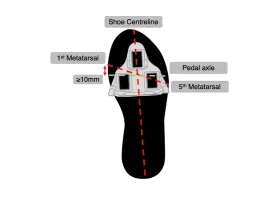
Float and Adjustments
What is Float? Float allows slight foot movement on the pedal, accommodating natural knee alignment. Zero-float cleats “lock” the foot but must match the knee's natural tracking plane to avoid strain.
Stability Issues: Instability often stems from improper biomechanics, not the cleat itself. Correcting factors like foot arch support or hip alignment can resolve instability.
Balancing Float: When positioned correctly, float ensures comfort and efficiency without instability, allowing the knee to move naturally during the pedal stroke.
Lake Cycling Shoes
Fit Philosophy Lake is dedicated to creating the best-fitting, most comfortable high-performance cycling shoes. One Size Does Not Fit All. We match each shoe’s fit to its intended function, considering the type of riding, gender, and intensity of the rider. Instead of forcing one or two foot shapes to fit all, we offer a variety of lasts to meet most riders' needs. Why the Right Cycling Shoes Matter The correct cycling shoes are essential for comfort, performance, and injury prevention. Proper fit ensures efficient power transfer, prevents discomfort like hot spots or numbness, and supports the foot's natural mechanics during cycling. Choosing the right fit can make a significant difference in your ride quality and overall experience.
Book a Cleat Fitting
Call 01224 or email info@totalendurancecycles.co.uk
The cost for a Cleat Fitting session is £30 and takes approximately 30minutes.
We can set the cleats on your current cycling shoes or we also offer a cycling shoe sizing service and we stock a range of Lake.
